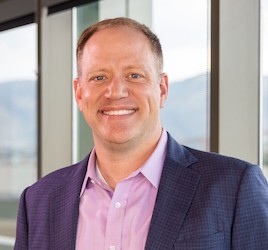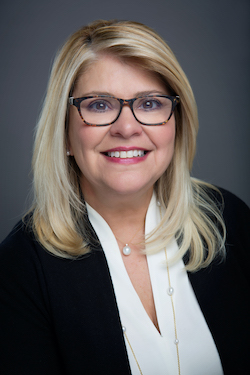📚 CIO 100 US: 10 award-winning manufacturing IT projects
💡 Newskategorie: IT Security Nachrichten
🔗 Quelle: cio.com
The manufacturing industry has fully entered the digital era, with the most digitally advanced manufacturers integrating their information technology and operational technology environments to give themselves an edge in the marketplace.
They’re also advancing their use of automation and analytics to streamline back-office functions, logistics, and production, and to optimize resources, reduce costs, and identify new opportunities, industry analysts say.
In its 2022 Digital Factory Update, ABI Research predicted that spending on smart manufacturing would grow at a 12% compound annual growth rate, from $345 billion in 2021 to more than $950 billion in 2030 — all to support digital transformation initiatives.
The research firm further predicted that manufacturers would continue to increase their spending on analytics, collaborative industrial software, and wireless connectivity in upcoming years, with factories increasingly adopting Industry 4.0 solutions, including autonomous mobile robots, asset tracking, simulation, and digital twins.
Michael Larner, a research director at ABI Research, says technology innovation will remain instrumental for manufacturers’ success as they confront myriad challenges, such as escalating energy costs, supply chain disruptions, staffing shortages, and the need to optimize resources.
“We’re seeing a move away from basic automation to integrating IT and OT teams, optimizing using analytics to make sure things are as efficient as possible, and to do things like predictive maintenance and proactive monitoring,” Larner says.
Consequently, manufacturers now prioritize IT investments that create and extend their “digital thread,” in which applications within their IT architecture talk to one another, with data from one system informing and directing action in others, Larner says.
“Manufacturers appreciate they cannot just react to events but need to be proactive,” he adds. “A successful CIO needs to be equally at home on the factory floor understanding issues and influencing change as in the boardroom talking strategically and obtaining project funds.”
CIO.com recently recognized the following 10 manufacturers as part of the CIO 100 Awards for IT Innovation and Leadership. Here is a look at how they are capitalizing on the value of IT.
Avery Dennison brings intelligence to its supply chain

Nicholas Colisto, VP and CIO, Avery Dennison
Avery Dennison
Organization: Avery Dennison
Project: Advanced Planning System (APS) for Operational Production Planning and Detailed Scheduling
IT Leader: Nicholas Colisto, VP and CIO
Like many manufacturers, Avery Dennison saw the need to strategically use technology to add more agility, efficiency, and speed to its increasingly large and complex supply chain.
In response, Avery Dennison IT partnered with the company’s global supply chain operations to create the Advanced Planning System (APS) for Operational Production Planning and Detailed Scheduling, a system that provides granular insights into supply issues and constraints, giving the supply chain team the tools needed to make effective and timely decisions.
APS gathers, captures, and combines all relevant inputs and outputs of supply chain events in near real-time to form a digital twin of the supply chain. The system’s easy-to-use interface enables the centralized team to monitor and take immediate action on events.
Working with the supply chain function to define and align organizational priorities and needs, Avery Dennison IT set about creating a mathematical model for establishing short-, mid-, and long-term operational plans. IT also automated a range of tasks, using intelligent optimization algorithms to identify anomalies, interpret impacts on downstream supply chain actors, and communicate that information to relevant stakeholders — thereby enabling the supply chain team to quickly respond to and remediate issues.
“This system enables our supply chain function to gain insights into the constraints and issues within the different assets of the supply chain, giving us all the tools in a single place to make effective and timely decisions,” says Vice President and CIO Nicholas Colisto. “Together, our new robust data lake, predictive analytics, and digital-twin capabilities are helping Avery Dennison to optimize the utilization of our assets, avoid downtime, and provide better visibility and analysis of the complete supply chain, allowing the organization to respond quickly to disruptions and deviations.”
CoorsTek streamlines production operations

Matt Mehlbrech, VP of IT, CoorsTek
CoorsTek
Organization: CoorsTek
Project: Model Plant Implementation
IT Leader: Matt Mehlbrech, VP of IT
Production operators at CoorsTek had an efficiency issue. To report on production, monitor machine performance, record quality readings, and search and retrieve documents, they had to use multiple computer systems and paper-based processes, rendering their work inefficient and prone to errors due to the lack of integration and data validation.
To remedy this, and create a foundation for future transformation, CoorsTek IT developed Model Plant, an integrated systems strategy focused on increasing production operator efficiency, providing key metrics to manufacturing management, and preparing CoorsTek for a future ERP implementation.
At its core is a manufacturing operations management (MOM) system, which combines manufacturing execution and maintenance management in a single integrated platform. As envisioned, Model Plant will integrate this MOM system with the company’s ERP, quality management, and machine connectivity systems into a single console for CoorsTek production operators, helping them stay focused on producing high-quality ceramic parts.
IT designed, developed, and implemented Model Plant at six CoorsTek plants in under 18 months, with the environment already improving production operators’ efficiency. Implementation is ongoing, with IT seeing it as foundational to a smooth transition to a new ERP.
“Our Model Plant systems enable real-time visibility of our entire shop floor and creates a comprehensive data set that we can analyze and learn from to unlock tangible productivity and quality gains,” says Matt Mehlbrech, the company’s vice president of IT.
Dow digitizes its manufacturing facilities

Melanie Kalmar, corporate vice president, CIO, and CDO, Dow
Dow
Organization: Dow
Project: Dow Digital Manufacturing Acceleration (DMA) Program
IT Leader: Melanie Kalmar, corporate vice president, CIO, and CDO
Dow in fall 2020 launched its Digital Manufacturing Acceleration (DMA) program with the goal of accelerating the deployment of digital technologies across its global manufacturing and maintenance areas.
One program deliverable to date is a private, secure, high-speed cellular network that is fully within the enterprise network. This network provides real-time access to data and collaboration tools, thereby enabling employees to extend their work beyond the traditional office out into the manufacturing plant environment.
DMA also includes a secure cloud for hosting, integrating, and contextualizing data for employees through purpose-built applications, and a mobile-first platform where employees can access their data and actionable insights.
Through such deliverables, DMA correlates and integrates manufacturing data and analysis that employees can use to make better, faster decisions. Capabilities delivered through the program also help improve asset reliability, safety, quality performance, and operational efficiency while reducing operating costs and unplanned events.
Together, DMA solutions create an improved employee experience, a digitally enabled workforce, and a resilient manufacturing organization by integrating and contextualizing manufacturing data from engineering, operations, maintenance, logistics, ERP and related ecosystem data sources, and by delivering data and insights from multiple systems through a single, user-centric interface.
“Dow’s DMA’s success would not be possible without the outstanding collaboration between our information systems and manufacturing teams. By deepening our understanding of what our manufacturing teams need to safely and reliably meet our customers’ needs and what IS can deliver for manufacturing, we have been able to arrive at these high-performing DMA solutions,” says Corporate Vice President, CIO, and CDO Melanie Kalmar.
Dow’s DMA solutions are in use at the company’s largest facility, where they’re already generating value through increases in manufacturing asset utilization, reductions in unplanned events and production outages, production volume increases, and other quantifiable key performance indicators. Implementation of DMA solutions at other Dow facilities is ongoing.
Analytics proves key to Eastman materials innovation

Aldo Noseda, vice president and CIO, Eastman
Eastman
Organization: Eastman Chemicals
Project: Fluid Genius Digital Product
IT Leader: Aldo Noseda, vice president and CIO
Eastman Chemicals in 2021 launched Fluid Genius, a patent-pending digital platform that enables manufacturing plant workers to monitor issues that could impact operations, safety, yield, and maintenance budgets.
Fluid Genius can monitor, analyze, and extend the life of Eastman’s customers’ heat transfer fluid. The technology can predict fluid life expectancy and advise how best to extend it while also avoiding unplanned manufacturing shutdowns.
Fluid Genius also provides forward-looking insights, which allows plant maintenance engineers and operations managers to plan the optimal time for maintenance, thereby minimizing risk and costs. Fluid Genius’s recommendation engine also helps plant engineers better understand the factors impacting the quality of their heat transfer fluid, which in turn helps them operate their plants safely and inform budgeting for future maintenance needs.
To create this application, Eastman drew on its nearly 50 years of operating system sample analysis data to draw in-depth insights on fluid chemistry behaviors over time. The company combined that data with end-user input into its maintenance and incident logs and advanced artificial intelligence/machine learning techniques to create the platform’s proprietary fluid analytics.
“Digital products and services like Fluid Genius are critical to Eastman becoming a leading material innovation company because of the value they provide to our customers and how they differentiate us from competitors,” says Eastman VP and CIO Aldo Noseda.
Eastman has already seen strong uptake in use of this platform, and company officials note that the platform benefits its customer acquisition and retention efforts.
General Motors turns to IT to navigate semiconductor shortage

Fred Killeen, CIO and VP of Global IT, General Motors
General Motors
Organization: General Motors
Project: Semiconductor Shortage: Protecting GM Revenue
IT Leader: Fred Killeen, CIO and VP of Global IT
Like all modern vehicle-makers, General Motors relies on semiconductors to make its products; in fact, a typical vehicle relies on more than 3,000 chips within its electronic control units (ECU) to run essential vehicle functions.
As a result, General Motors faced the possibility of shutting down production when a global shortage of semiconductors arose in 2021. But thanks to an innovative technology that enabled GM to build vehicles without key electronic components and park them in lots for completion later when semiconductors became available, factories in North America could keep running.
The IT-developed solution — an industry first — essentially extended the secure plant network into vehicle storage locations, some of which were hundreds of miles away from manufacturing sites in the United States and Mexico.
This allowed repair teams, who were equipped with GM standard test tools configured with mobile printers and portable hot spots, to connect to the GM network and company systems to validate parts, complete repairs, download engine control software to ECUs, and test the vehicles. Completed vehicles were driven or returned to plants on carriers for the final stages of quality testing before being shipped to dealerships and customers.
The IT team also built tools to collect data about chips and suppliers and to provide that data on demand, enabling GM to route chips to suppliers who produce ECUs for its most popular vehicles.
Additionally, business intelligence and analytics teams developed tools and reporting features to manage the ECU repair process and prioritize fixes based on the time a vehicle was in a lot and their impact on GM revenue. These teams also developed a unified view, thereby displaying all data in one place.
“Working with teams across the organization, they delivered an industry-first technology solution that allowed us to build vehicles without some electronic components and complete them remotely as semiconductors became available — it’s a process that continues to prove valuable today,” says Fred Killeen, CIO and global VP of IT.
Oshkosh goes digital to optimize its supply chain

Anupam Khare, senior vice president and CIO, Oshkosh
Oshkosh
Organization: Oshkosh
Project: Enhanced Supply Chain Efficiency
IT Leader: Anupam Khare, senior vice president and CIO
Oshkosh had identified three issues within its supply chain function, which is tasked with acquiring the rights parts at the right time to support the manufacturing of customized, premium products requiring sophisticated components.
First, there was a lack of parts visibility across Oshkosh’s supply network, which led to unexpected parts shortages, putting the company at risk for production delays and shutdowns. That visibility issue in turn had created inefficient logistics and inventory leveling processes, driving up costs. And then there was the company’s supply chain technology itself, which comprised disparate, unconnected systems.
To address those issues, Oshkosh’s digital technology team partnered with its supply chain function to develop an advanced digital platform complete with system-to-system integration, cohesive data environments, data enhancements, and machine learning. Together, they teams also created a series of advanced analytics solutions to establish a more connected and optimized supply chain.
The platform pulls together critical data sources across several systems and functional areas and serves as the foundation for agile delivery of additional digital products. For example, the digital technology team quickly deployed a parts shortage prediction model soon after the platform was created. The team also deployed multiple advanced analytics solutions to optimize inventory levels, logistics, and shipping costs.
Initiated in January 2021 and now fully deployed, the collection of technologies has already increased supply chain visibility, part shortage prediction accuracy, and operational efficiency, and has helped Oshkosh avoid stockouts and subsequent costly production delays and shutdowns.
“This project showed the importance of IT staying well-connected with business partners to anticipate opportunities/challenges early and to co-create value through digital solutions,” says Anupam Khare, senior vice president and CIO.
Otis takes smart elevator to new heights
Organization: Otis Elevator
Project: Otis ONE
IT Leader: Renee Zaugg, vice president and CIO (Zaugg has since left Otis.)
To bring more transparent, proactive, and predictive services to customers, Otis in mid-2020 started work on a global digital transformation program called Otis ONE.
Leveraging technologies such as IoT, big data, AI, mobile, and cloud, Otis ONE provides real-time visibility of elevator health, insights for predictive maintenance, and remote assistance and troubleshooting.
Otis ONE is tailored to deliver real-time data insights to a range of personas — from campus owners to field engineers to maintenance officers — in their day-to-day operations, thereby empowering various stakeholders to make more informed decisions and deliver more predictive maintenance, more effectively.
The Otis ONE architecture consists of three tiers — edge, platform, and enterprise. Edge relies on various gateway/sensor packages to collect and send a range of elevator data to the cloud via a cellular network, which is then integrated with the platform tier via its IoT hub or event hub. The platform tier features real-time business processing fueled by a rules engine that analyzes data and immediately determines various conditions on the state of the elevator, notifying Otis workers and external customers proactively in the event of anomalies.
The Otis ONE enterprise tier brings together multiple applications that leverage the information coming from the edge and platform tiers, integrating it with elevator master and service data to give a 360-degree, real-time view of elevators around the globe.
“The connected elevator creates value for our customers with greater equipment uptime. Otis ONE enhances transparency to our customers, productivity of our own teams in predication and proactiveness,” says Ezhil Nanjappan, executive director and CTO, adding that the Otis ONE ecosystem serves as a “foundation for any smart cities and smart buildings.”
Owens Corning leverage low-code to improve plant safety

Steve Zerby, senior vice president and CIO, Owens Corning
Owens Corning
Organization: Owens Corning
Project: Low-Code Digital Platform for High Impact to Plant Safety and Compliance
IT Leader: Steve Zerby, senior vice president and CIO
Owens Corning must monitor and manage the vapors from asphalt tanks for both safety and regulatory compliance reasons. But it found its process for doing so was ineffective and slow. Data was collected in offline databases, and was plant-specific and difficult to share across the company. In addition, the analysis required to uncover potential hazards took days.
So, in August 2021, Owens Corning’s asphalt business function and IT teamed up to co-create a digital platform that could transform and improve the effectiveness of that process through improved data collection and actionable analytics.
Low-code application development technology enabled the two teams to quickly create a proof-of-concept, gather feedback, and fine-tune the platform. Within three week, a pilot was delivered to a plant, and the platform itself was implemented across 20-plus plants in only three months.
The platform provides a single source of truth for loss prevention data, with proactive monitoring and analytics that alert plant leaders with real-time insights to ensure hazard prevention.
The company has seen improvements in its program. Loss prevention hazards are now identified and addressed in real-time, thereby ensuring more effective personnel safety and regulatory compliance reporting. That visibility has also enabled more proactive preventive maintenance of equipment, thereby minimizing unplanned production outages. And, thanks to the platform’s analytics capabilities, insights are generated in minutes instead of days, enabling the company to make informed decisions quickly.
“Digitizing sensor measure data taken from tanks, integrating other data points, and providing easy-to-use visuals and analytics empowered plant operators. They can quickly assess potential hazards and risks in real-time and proactively take preventive actions,” says Steve Zerby, senior vice president and CIO, noting that a key element of success was having “a dedicated business product owner who is passionate about bringing others along in using the tools.”
Rockwell Automation launches customer-centric transformation

Chris Nardecchia, SVP and chief information and digital officer, Rockwell
Rockwell
Organization: Rockwell Automation
Project: Rockwell Automation Drives Innovation, Customer Centricity and Moves Towards a Data-Driven Operating Model Through its Enterprise Transformation Office
IT Leader: Chris Nardecchia, SVP and chief information and digital officer
As Rockwell Automation works to help customers accelerate their digital transformations, the company likewise embarked on its own DX journey. In doing so, it is creating new customer experiences, transforming business models, and empowering workforce innovation.
Launched in August 2020, the initiative is helping to build a data-driven operating model that is agile and centered around the customer so it can both respond to changing needs and create lasting customer connections instead of one-time transactional product sales.
To do that, the Enterprise Transformation Office (ExO) mapped out end-to-end business processes and customer experience needs for the target state and prioritized the investments required to deliver a holistic customer experience.
The office is moving Rockwell Automation to a data-driven operating model, in which it will execute more than two dozen product development cycles annually and use customer information to shape those products. Additionally, the ExO is working to transform business models, processes, software, and service portfolios to deliver more subscription-based offerings to customers.
Rockwell Automation is using telemetry to gather data and insights as well as creating a comprehensive, unified view of customer data to enhance the company’s customer engagements. It’s updating processes and systems to support its future state. It’s also leveraging data gathered from other initiatives to innovate products, grow the market, and grow the business. And it has implemented a structured approach for governing its transformation roadmap.
“This program is critical to realizing our vision of reinventing our products to outcomes, reimagining our customers’ experience, and redefining our operating model towards subscriptions and annual recurring revenue,” says Senior Vice President and Chief Information and Digital Officer Chris Nardecchia.
Schneider Electric secures against rise in OT cyberattacks

Elizabeth Hackenson, SVP and CIO, Schneider Electric
Schneider Electric
Organization: Schneider Electric
Project: Cybersecurity Connected Service Hub
IT Leader: Elizabeth Hackenson, SVP and CIO
In response to the growing number and sophistication of cyberattacks directed at operational technology (OT), Schneider Electric in 2020 created a cybersecurity OT operating model aimed at optimizing the cybersecurity performance of its 220 manufacturing plants and 35 distribution centers around the globe.
The model establishes one Security Operation Center (SOC) for all Schneider IT and OT. It also establishes a threat detection platform at each plant that raises security alerts to the SOC via an interface with the security information and event management (SIEM) system.
The operating model also features the Cybersecurity Connected Service Hub (CSH), a 24/7 global team to support the company’s industrial sites in every type of cybersecurity event. Its primary responsibilities are to identify and baseline cybersecurity posture of OT and IT devices; detect and remediate security alerts; and monitor for and remediate vulnerabilities.
CSH is also charged with driving continuous improvement and progressively improving the company’s cybersecurity posture in OT devices and processes.
The CSH team receives alerts from the SOC, analyzes those alerts and defines how this must be remediated. The team works with cybersecurity site leaders (CSL) to remediate alerts; CSLs are OT experts trained in cybersecurity who work in an assigned plant, with a CSL in each plant, and have accountability for the cybersecurity of the OT in that plant. They can remediate a cyber incident and manage the business continuity.
The CSH also provides cybersecurity training for all CSLs. It builds and promulgates standard operation procedures (SOP) for each type of security event and vulnerability. It also monitors cybersecurity KPIs in all plants, remediating in conjunction with the CSL any gaps that it identifies.
“The creation of the Cybersecurity Connected Services Hub is a milestone in our continuous journey towards greater resilience and cybersecurity at Schneider Electric,” says SVP and CIO Elizabeth Hackenson.


 800+ IT
News
als RSS Feed abonnieren
800+ IT
News
als RSS Feed abonnieren